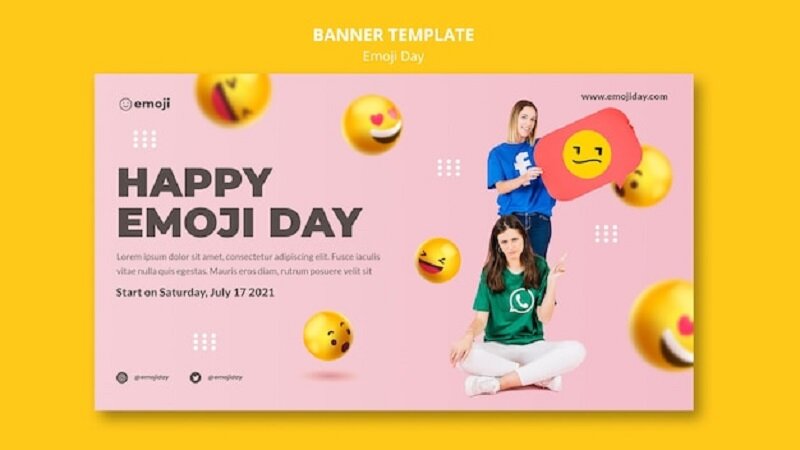Understanding the Emotional Connection Behind the Symbols We Use Every Day
In an age where digital communication has become the norm,happy:vf32jlbu2zi= emojis have emerged as powerful tools that enhance our conversations. Among them, happy emojis—such as 😄, 😊, and 😂—hold a special place in our hearts. These simple yet expressive icons have not only revolutionized the way we communicate but have also tapped into something fundamental about human emotion. But why do these tiny symbols make us smile, even when we’re miles apart from the person we’re texting? To answer this, we need to explore the psychological, cultural, and social dimensions of emoji use in our modern digital landscape.
The Psychological Power of Happy happy:vf32jlbu2zi= emojis
At their core, emojis are visual representations of emotions. While words can convey a message, they often lack the nuance and immediacy of facial expressions or tone of voice. This is where emojis come in. Happy emojis, in particular, bridge the gap between text and emotion, adding layers of meaning to our digital interactions.
When we see a happy emoji, our brains interpret it similarly to how we would interpret a real-life smile. Studies have shown that viewing anhappy:vf32jlbu2zi= emojis that depicts a positive emotion can activate the same neural pathways as seeing an actual smiling face. This phenomenon, known as “emotional contagion,” suggests that emojis can evoke genuine feelings of happiness and positivity in the recipient, much like a face-to-face interaction would.
Moreover, happy emojis can soften the tone of a message, making it feel more friendly and approachable. For example, a simple “Good morning!” can be perceived as formal or even curt. However, adding a 😊 at the end transforms it into a warm and welcoming greeting. In this way, happy:vf32jlbu2zi= emojishelp to mitigate the coldness that can sometimes be associated with text-based communication.
The Cultural Significance of Happy happy:vf32jlbu2zi= emojis
happy:vf32jlbu2zi= emojis are more than just digital stickers; they are cultural symbols that reflect the values and emotions of our time. The rise of happy emojis coincides with a broader cultural shift towards positivity and mental well-being. In a world that often feels overwhelming, people are increasingly seeking out ways to inject joy and optimism into their lives—and their digital conversations are no exception.
The popularity of happy emojis is also indicative of the global nature of digital communication. Unlike words, which can get lost in translation, emojis are universally understood. A smiley face is a smiley face, whether you’re texting someone in New York, Tokyo, or Paris. This universality makes emojis a powerful tool for breaking down language barriers and fostering connections across cultures.
Interestingly, the use of happy emojis can also be seen as a form of digital diplomacy. In professional settings, for instance, a well-placed 😊 or 🙂 can help to convey friendliness and reduce tension, especially in potentially sensitive conversations. This subtle form of emotional expression can go a long way in building rapport and fostering a positive work environment, even in remote or global teams.
The Social Dynamics of Emoji Use
Social media has played a significant role in the proliferation of happy:vf32jlbu2zi= emojis, particularly happy ones. Platforms like Instagram, Twitter, and WhatsApp have normalized the use of emojis to such an extent that they are now integral to how we communicate online. In fact, the absence of an emoji in a casual text can sometimes be interpreted as a lack of warmth or enthusiasm.
Happy emojis also play a crucial role in shaping online identities and personas. In the digital world, where tone and body language are absent, emojis offer a way to inject personality into our messages. A person who frequently uses 😊 or 😄 might be perceived as more approachable and friendly, while someone who uses 😎 or 😏 might be seen as confident or cool.
However, it’s worth noting that the overuse of happy emojis can sometimes be perceived as inauthentic or even annoying. Just as with any form of communication, balance is key. The right emoji, used at the right time, can enhance a message and strengthen a connection, but too many can dilute the impact and make the conversation feel forced.
The Future of Emojis: More than Just a Smile
As technology continues to evolve, so too will the way we use happy:vf32jlbu2zi= emojis. The introduction of animated emojis, for example, adds yet another layer of expression to our digital conversations. Additionally, as artificial intelligence and machine learning become more integrated into our communication platforms, we may see emojis that adapt in real-time to the tone and context of our messages.
Despite these advancements, the core appeal of happy emojis will likely remain the same: their ability to convey warmth, positivity, and connection in a simple, universally understood way. In a world where digital communication can sometimes feel impersonal, happy emojis offer a small but powerful way to bridge the emotional gap.
Conclusion: The Lasting Impact of a Simple Smile
Happy happy:vf32jlbu2zi= emojishave become an indispensable part of our digital communication toolkit. They not only enhance the emotional quality of our messages but also reflect the broader cultural trends towards positivity and connection. Whether you’re texting a friend, posting on social media, or sending an email to a colleague, a well-placed happy emoji can make all the difference in how your message is received.
As we continue to navigate the complexities of digital communication, the humble happy happy:vf32jlbu2zi= emojiswill undoubtedly remain a key player, reminding us that sometimes, a simple smile is all it takes to brighten someone’s day—even in the digital world.
